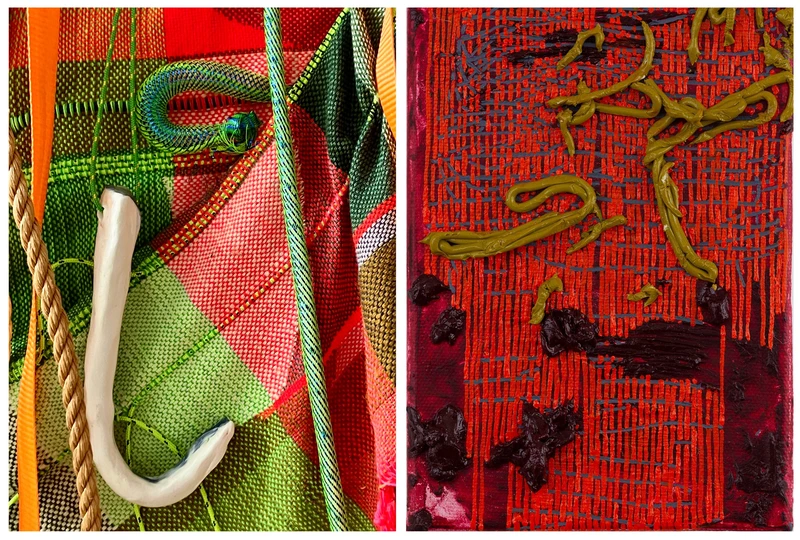Rosie Mullan, Katie Pratt
10 Nov-3 Dec 2023
PV 9 Nov 2023, 6-9pm


This project is the last of four 2-person exhibitions which collectively think about contemporary painting. Each exhibition becoming a space where shared interests give rise to disparate ways of thinking and making. All painting is polyglot and performs more than the mere intention of its maker. Exhibitions present the opportunity for works to draw out from one another latent qualities which might not at first present themselves, and for the possibility of new 'meanings' to coalesce in the crosstalk* between works.
The works in the final exhibition in this series: Rosie Mullan, Katie Pratt, employ grids, systems, traditions and languages as a range of armatures for the application and organisation of colour, line and matter. In looking at these paintings however, it remains uncertain what the direction of travel is - from simplicity toward complexity, or from choas toward order. Simplicity, order, chaos and complexity are not ultimate or definitive positions, as they are each constructs - names that we give to ideas in order to hypothesise a sense of where we are and where we are going. With all compass points in flux, it becomes increasingly apparent that the works themselves weave all these ideas into a form which despite have arrived, speaks urgently of the micro-decisions that constitute its very making.
In looking at these paintings (made in oil or acrylic paint, wool, ribbon and webbing, with ceramic and other appendages) we quicly become joyfully submerged in the negotiation of action and consequence as we follow their dynamic compositions. There is something else going on here too which these visual qualities might momentarily veil. The works cannot help but offer tentative metephors for the way histories, weathers, behaviours, etc. are understood when data is collectively addressed. The paintings, then, suggest a relatioship with the world around us - from the way humas socially and politically organise themselves, to the way that networks proliferate as systems outwork themselves. These painting-maps neither describe nor precede the territory; they both are, and are not, the territory. Their relation to the worls is that of material and of poetry.
In Velazquez' The Spinners (1657) we see a group of working women in the forground preparing yarns. In a sunlit, tapestry-lined room farther back, we see a second group - two of whom are dressed as if mid-performance against a backdrop based on Titan's Rape of Europa. Where the drama of the tapestry ends and the costumed performers (in real space) begin is impossible to establish, their bodies becoming entwined within the mythological scene. Three further women wait on, somewhat disengaged, caught between the ordinary scene and spinning (at picture front) and the mythological world (at the back). The Velazquez' painting we don't see the act of weaving, but we do see the processes that predate it, and the results of it. We also see that at all stages of conjuring worlds from yarn, the lived experience is inseperable from art-as-porcess and art-as-image-object. Repetitious labour, performing, waiting and looking are the preoccupations of all studios today too, and their traces haunt the gallery as we viewers each look into, and between, the works gathered in this show. Art, especially painting with its overloaded histories, can only ever be simultaneously spiritual and material; cosmic and banal; tactile and transportive. It is in these live condradictions that paintings resist becoming turgid and knowable, it is in these dualities that they are able to connect ideas and cultures ordinarily out of reach. They become much more than they first appear.
* the term is borrowed from Erik Davis' The Thing is Alive in Mark Leckey, The Universal Addressibility of Dumb Things (2013)